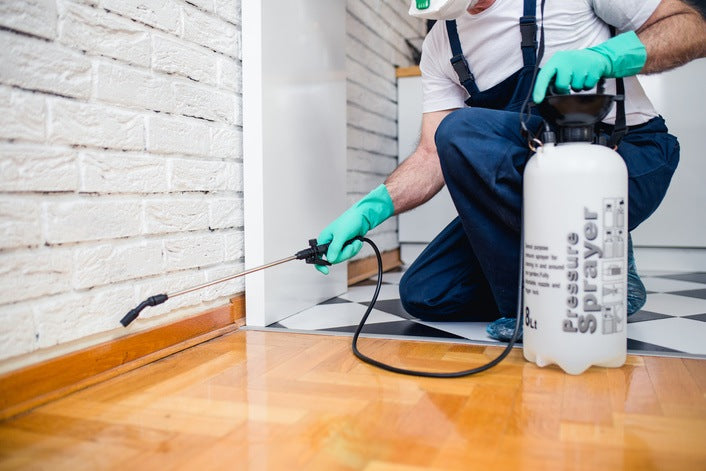Discovering Invasion and Therapy Techniques worldwide of Pest Control
The landscape of bug control incorporates a myriad of obstacles, especially as problems of common house pests continue to evolve. Comprehending the habits and reproductive patterns of these annoyances is essential for developing reliable treatment methods. By incorporating precautionary actions with sophisticated management techniques, such as Integrated Pest Administration (IPM), home owners can better secure their environments. However, the efficiency of these techniques may differ substantially based upon certain conditions. What hidden elements add to the success or failing of these strategies in various setups?

Typical House Vermin
When it comes to handling our space, understanding typical family bugs is critical. These pests not only disrupt our comfort but can also position wellness threats and damages residential or commercial property. The most common home insects include ants, roaches, rats, termites, and bed pests.
Ants, frequently seen foraging in kitchens, can infect food and establish large swarms. Rodents, consisting of computer mice and rats, can cause architectural damages and carry conditions like hantavirus and salmonella.
Identifying the signs of these pests, such as droppings, nests, or attack marks, is important for very early intervention (Pest Control Lockhart). Proper sanitation techniques, sealing access points, and keeping a clutter-free atmosphere work preventative procedures. By identifying these usual household parasites and understanding their behaviors, house owners can take positive actions to mitigate problems, guaranteeing a much healthier living atmosphere
Understanding Bug Infestations
Bug problems can rise quickly, turning a small aggravation right into a significant problem if not addressed quickly. Typical aspects adding to problems include poor sanitation, structural vulnerabilities, and seasonal changes that drive pests indoors.
Identifying the sort of insect is necessary, as various types display different habits and reproductive rates. For example, rodents might develop nests in hidden areas while pests like cockroaches prosper in wet atmospheres. Early detection typically hinges on recognizing signs such as droppings, munch marks, or uncommon noises, which can indicate a problem before it becomes severe.
Cozy, moist climates can promote the rapid development of parasite populations, while changes in landscaping or building and construction can inadvertently produce conducive atmospheres. An enlightened approach to understanding these characteristics lays the foundation for reliable insect administration approaches in the future.
Treatment Techniques and Strategies
Effective therapy methods and techniques are essential for alleviating parasite infestations and restoring a risk-free atmosphere. A diverse strategy is often best, integrating chemical, biological, and mechanical methods customized to the specific pest and the seriousness of the invasion.
Chemical therapies consist of the use of insecticides and herbicides, which can efficiently get rid of bugs. Proper application and adherence to safety guidelines are crucial to minimize risks to humans and non-target organisms. Integrated Insect Monitoring (IPM) encourages the judicious usage of chemicals as a last hope, counting instead on monitoring and threshold levels to determine intervention demands.
Organic control techniques involve introducing natural killers or parasites to lower bug populations. This over here strategy is significantly popular, specifically in farming settings, as it advertises environmental sustainability.
Mechanical methods, such click here for info as catches and barriers, supply immediate alleviation from insects without presenting chemicals. Options consist of sticky traps for pests or physical barriers for rats.
Eventually, the selection of treatment approach ought to take into consideration the specific parasite, the environment, and possible effect on human wellness and communities. A well balanced combination of these methods can effectively handle problems while promoting lasting pest control options.
Safety Nets for Residence
Proactively dealing with parasite issues before they escalate is crucial for keeping a healthy home atmosphere (Pest Control Lockhart). Carrying out reliable preventive procedures can significantly decrease the possibility of problems, inevitably safeguarding both your building and health

Correct landscape design additionally plays a crucial role in prevention. Keeping bushes and trees trimmed away from the home reduces the opportunities of parasites locating their means inside. Moreover, make sure that drain systems are working effectively to stop standing water, which can draw in insects and various other pests.
Lastly, regular assessments are recommended. Frequently inspecting for signs of bug activity enables very early intervention. By taking on these safety nets, property owners can develop an atmosphere that is less friendly to parasites, thereby improving their overall lifestyle and lowering the need for substantial bug control interventions.
Business Parasite Control Methods
A comprehensive technique to commercial pest control is important for businesses intending to keep a risk-free and sanitary atmosphere. Reliable techniques that site entail a combination of routine inspections, staff member training, and the implementation of Integrated Parasite Management (IPM) methods.
Normal evaluations make it possible for early detection of parasite activity, permitting for prompt intervention. Organizations should establish a regular timetable for these assessments, focusing on risky locations such as kitchen areas, storage space rooms, and garbage disposal websites. Staff member training is equally vital; team should be informed on the indications of parasite problems and the significance of reporting them promptly.
Applying IPM practices helps reduce bug concerns sustainably. This consists of environment alteration, such as securing access factors and reducing clutter, as well as employing natural deterrents before turning to chemical treatments.

Furthermore, working together with an accredited bug control copyright ensures accessibility to specialist expertise and innovative therapy alternatives. This collaboration can cause personalized insect control plans tailored to the particular needs of business, minimizing threats and boosting general effectiveness. Eventually, a proactive and informed method promotes a pest-free environment, protecting both public health and business reputation.
Verdict
In final thought, reliable insect control demands an extensive understanding of usual household pests and their habits, paired with targeted treatment approaches. Implementing precautionary actions alongside therapy approaches such as Integrated Insect Administration and biological control improves the capacity to mitigate infestations.